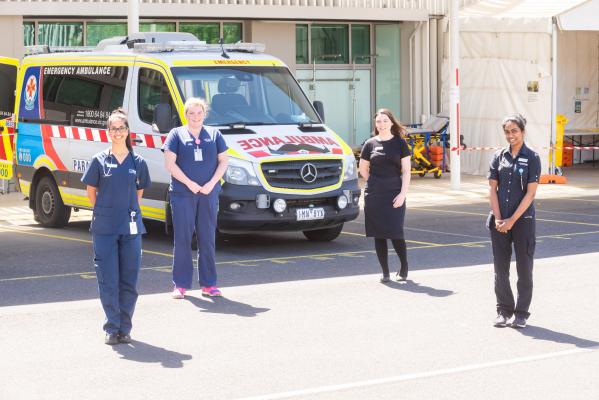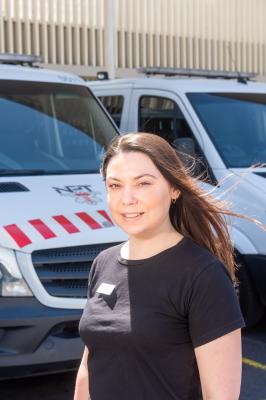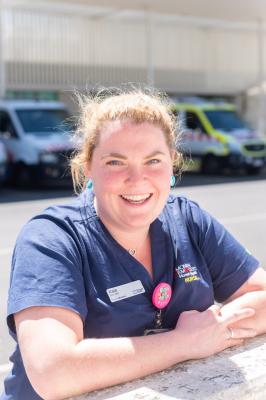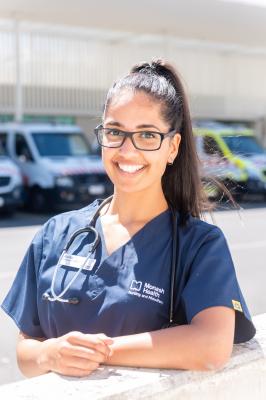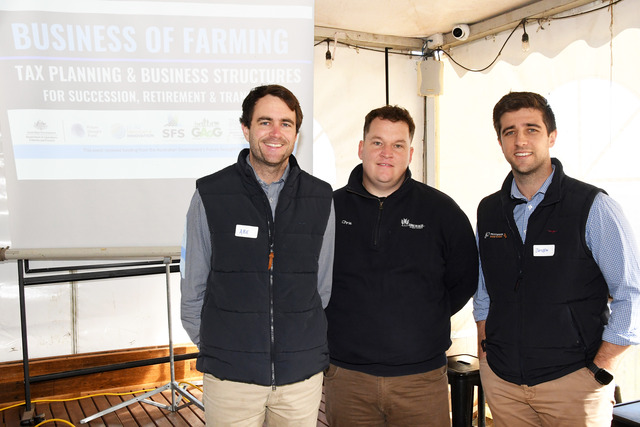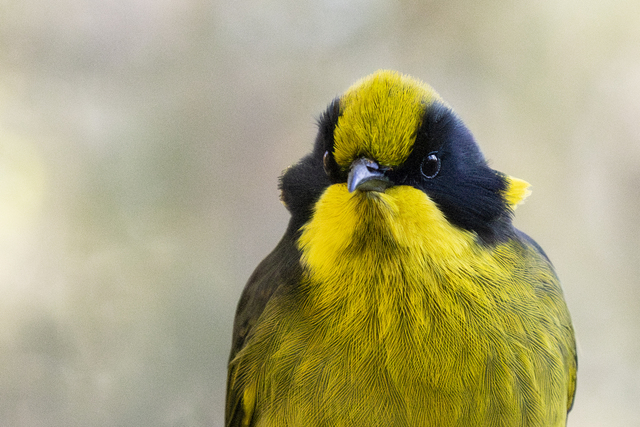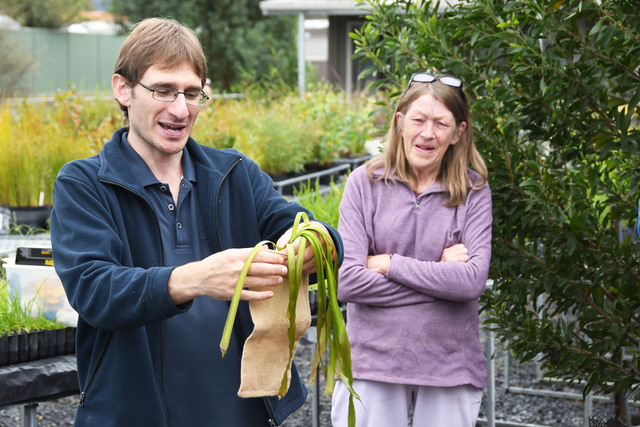AS MONASH HEALTH ROLLS OUT COVID VACCINATIONS FOR ITS FRONTLINE STAFF TODAY, WE REVISIT OUR ‘PEOPLE OF THE YEAR’ FEATURE (JAN 2021) ON WHAT HEALTH WORKERS HAVE ENDURED IN THE PAST 12 MONTHS.
This is for the frontline workers.
In our hospitals, clinics and testing stations, they risked their health to care for others during Covid-19’s wave after wave.
The unstinting nurses, doctors, surgeons, cleaners, counsellors, specialists, receptionists and the myriad of health care workers are the Star News Group’s People of the Year.
Kate Malloch is a specialist clinical nurse at Dandenong Hospital’s emergency unit and registered midwife in the maternity unit.
“It’s up there with the toughest year I’ve had,” she says.
“Adjusting to all the changes and knowing the risks involved … You were scared of what if you potentially bring it home. You don’t want to give it to your partner or mum.
“I wouldn’t say our lives were on the line – but our health, definitely.”
In emergency, the new normal workwear is the cloying N95 filtered masks, goggles, face screens and gloves.
During a shift of up to 12 hours, the face coverings stay on. And they fog up and sweat.
The masks bruise skin, smother fresh air and muffle speeches and smiles.
Hot and thirsty, workers ploughed on without water bottles on the floor.
At the end of the shift, workers’ faces are rimmed with “pressure marks”. Some of the marks seem permanent, Ms Malloch says.
For frontline workers, there was the ever-present fear of Covid infection. This year, more than 3500 Victorian health care workers tested positive.
Ms Malloch says fortunately she knew of no Monash Health workers infected – something she puts down to the hospital’s education, PPE, testing and hygiene protocols.
To keep others safe, she’d pack a fresh set of clothes to wear when she left the hospital.
She’d never go to the shops straight after work. She showered first thing before seeing anyone when she got home.
The pandemic’s spread and the social lockdowns were constantly changing. New hospital protocols had to be clearly communicated, quickly absorbed.
As second-wave new cases doubled by the day, it was hard to see light at the end of the tunnel, Ms Malloch said.
“There was so much doom and gloom. I felt it might be just the beginning.”
She remembers often gathering in the tearoom to find out “today’s numbers”.
“Everyone held on to the numbers – it was all about the numbers.”
Meanwhile, nervous patients needed more reassurance.
Ms Malloch was testing any emergency inpatient with symptoms like sniffles, loss of taste, breathlessness.
“We swab them not knowing if they’re (Covid) positive or negative.
“You treated everyone as if they have Covid – better to be safe than sorry.”
New mums in hospital were isolated.
They were unable to be visited by their children, grandparents and siblings – and in some cases, their husbands were stranded overseas.
All the while, Ms Malloch was frustrated by some of the public who didn’t take Covid seriously. Such as supermarket shoppers who didn’t socially distance.
“Seeing people struggling with their health – including people normally well and becoming really unwell … it’s an eye-opener.
“Anyone of us can get it at any point of time, not just in a hospital setting.
“You can get over it but what’s the long term effects of Covid on people?”
It was a “mental game” for workers not to “get ahead of ourselves”. Colleagues relied on one another to debrief, especially while isolated from most of their families.
“Colleagues became family.”
For the first time, Ms Malloch turned to self-care methods like meditation, music, yoga and ‘upcycling’ an outdoor table and chairs.
And the random thanks from others, such as care-pack gifts, really helped.
“That kind of thing really got you though those really tough days. To know people were thinking of you.
“You have to think of the positives.”
Dandenong Hospital’s extended-stay mental health unit nursing manager Lizzie Fulco paid tribute to her colleagues’ resilience.
At times, the workforce in Ms Fulco’s unit was halved for weeks on end as staff tested and self-isolated.
They pushed on even while pushed out of their comfort zones, she says.
“There’s nothing like a crisis to bring people together.”
All the while, more people than ever were isolated, depressed and needed the unit’s help, Ms Fulco said.
There was an effort to keep staff spirits buoyant. Sharing positive news, shining a spotlight on any patient’s improvements.
One of the silver linings from this pandemic is the fast-tracking of Telehealth online communications. It is here to stay and will improve access to treatment for patients and carers at home, Ms Fulco says.
Mental health-unit staff – often confronted by aggression – are also receiving a “reinvigorated appreciation” from the public.
For some, this year may recede into just a dim memory, like a bad dream.
But Ms Malloch is not one of them.
“I still have a very vivid picture of what it was like.”

